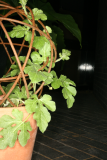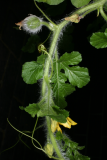Additional notes (click to expand)
Medicinal
Cultivated since the time of the Assyrians.
Mabberley, D.J. (1997) The Plant Book, ed.2, Cambridge University Press p.160
In the Arabian peninsula, the leaves, seeds, roots and dried fruits are used to treat dog, insect and snake bites, as a laxative and to relieve pain in joints.
Ghazanfar, S.A. (1994). Handbook of Arabian Medicinal Plants. CRC Press, Florida. p.91
In Yemen the seeds, which are also used as a purgative, are mixed with other food to reduce its strong laxative action. For severe constipation, a mixture of Citrullus's pulp is mixed with honey and hilba (Trigonella foenum-gracum). A poultice is made from crushed leaves and garlic and is applied on bites and stings. Powdered leaves are mixed with water and drunk as a laxative; crushed roots are mixed with goats milk and used as a purgative to treat colic.
Ghazanfar, S.A. (1994). Handbook of Arabian Medicinal Plants. CRC Press, Florida. p.91
Physician, philosopher, collector, and polymath, Sir Thomas Browne, says in his notebook: 'Bitter apple (Citrullus colocynthis), a widely cultivated plant of the gourd family … furnishing the well-known purgative drug.’ From Sloan MS 1861 in which Browne gives a long list of the seeds sown in his garden in 1667.
Other use
A rodent control since the times of Columella.
Mabberley, D.J. (1997) The Plant Book, ed.2, Cambridge University Press p.160
Seeds crushed with water are used as shampoo to darken hair colour.
Ghazanfar, S.A. (1994). Handbook of Arabian Medicinal Plants. CRC Press, Florida. p.91
Phytochemistry
Components of the dried pulp of fruit include cucurbitacin B and E, I and L in the stems, leaves and roots (both free and in the form of a glycoside). This constituents have been shown to possess tumour-necrosing activity. The glycoside, colocynthin, consists of elaterin (cucurbitacin E and cucurbatacin I). This shows strong purgative properties.
Ghazanfar, S.A. (1994). Handbook of Arabian Medicinal Plants. CRC Press, Florida. p.91
Toxicity
It is noted that bitter tasting Citrullus lanatus is toxic, containing cucurbitacin E (elaterinide), but ones which are not bitter do not contian this chemical and provide food and water for bushmen in the Kalahari desert. Symptoms of poisoning resemble strychnine.
Neuwinger, HD. (1996). African Ethnobotany: Poisons & Drugs, Chapman & Hall p.395
Toxic due to content of highly irritant cucurbitacins.
Professor Anthony Dayan, 2022
Geographical distribution
- Africa, East Tropical Africa, Kenya
- Africa, Northeast Tropical Africa, Chad
- Africa, Northeast Tropical Africa, Ethiopia
- Africa, Northeast Tropical Africa, Socotra
- Africa, Northeast Tropical Africa, Somalia
- Africa, Northern Africa, Algeria
- Africa, Northern Africa, Egypt
- Africa, Northern Africa, Libya
- Africa, Northern Africa, Morocco
- Africa, Northern Africa, Tunisia
- Africa, West Tropical Africa, Mali
- Asia-Temperate, Arabian Peninsula, Kuwait
- Asia-Temperate, Arabian Peninsula, Saudi Arabia
- Asia-Temperate, Arabian Peninsula, Yemen
- Asia-Temperate, Western Asia, Afghanistan
- Asia-Temperate, Western Asia, Cyprus
- Asia-Temperate, Western Asia, Iran
- Asia-Temperate, Western Asia, Iraq
- Asia-Temperate, Western Asia, Israel
- Asia-Temperate, Western Asia, Jordan
- Asia-Temperate, Western Asia, Lebanon-Syria
- Asia-Temperate, Western Asia, Turkey
- Asia-Tropical, Indian Subcontinent, India
- Asia-Tropical, Indian Subcontinent, Pakistan
- Asia-Tropical, Indian Subcontinent, Sri Lanka
- Asia-Tropical, Indo-China, Myanmar
- Europe, Southeastern Europe, Greece
- Europe, Southeastern Europe, Italy
- Europe, Southwestern Europe, Spain
Citrullus colocynthis (L.) Schrad.
Family: CUCURBITACEAEGenus: Citrullus
Species: colocynthis (L.) Schrad.
Common names: Bitter Apple; Bitter Gourd; Vine of Sodom
Pharmacopoeia Londinensis name: Colocynthis, Maiori Cucurbitae
Distribution summary: N.Africa to Pakistan
Habit: Annual
Hardiness: H2 - Tender; cool or frost-free greenhouse
Habitat: Wasteland and roadsides
Garden status: Currently grown
Garden location: Pharmacopoeia Londinensis 1618 'Fruit' (HSE 4), Plants in pots (POT)
Flowering months: June, July, August
Reason for growing: Medicinal, toxic
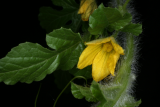
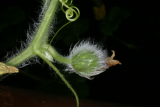
.JPG)
.JPG)
.JPG)
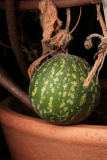
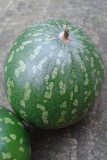
.JPG)
